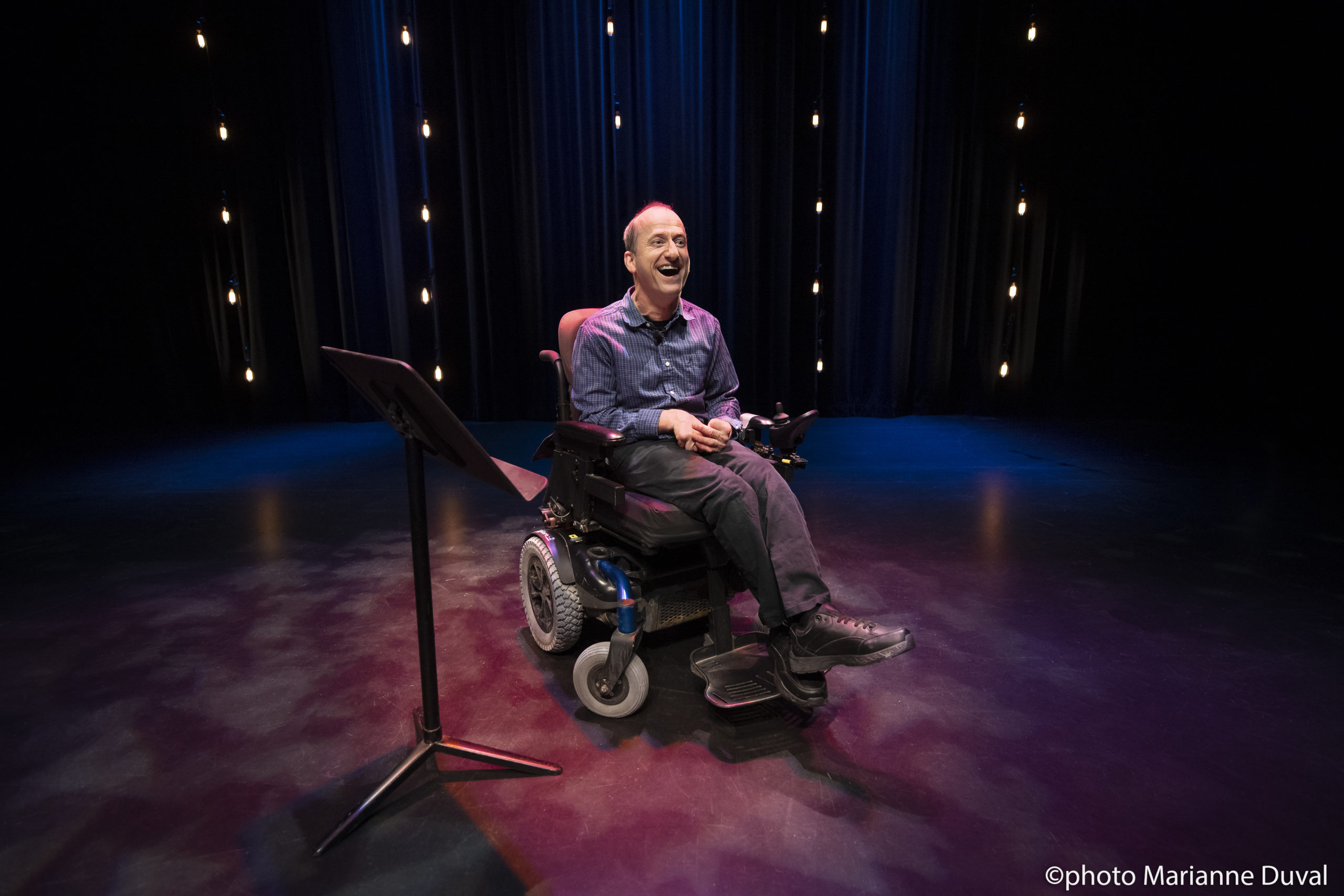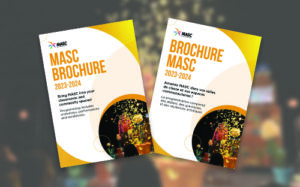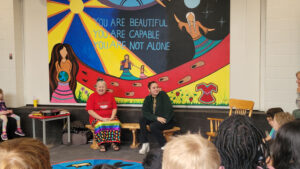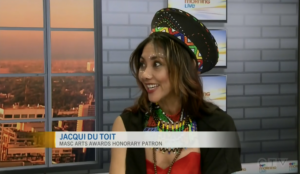Interview: Alan Shain frames disability as just one part of his story
By Jessica Ruano | January 6, 2022

This interview was originally published on Apt613.ca
A multidisciplinary artist whose career spans theatre, dance, storytelling, and stand-up comedy, Alan Shain blends comedy with a strong flavour of honesty and truth while drawing from the lived experience of disability. He has been touring his first original play, Still Waiting for That Special Bus, across Canada, England, the United States, and Australia since 1999. In this interview, Alan talks about adapting his work for young audiences and creating new work that speaks to their experiences as young people trying to fit in.

Alan Shain. Photo provided by MASC.
MASC: On your website, it says “Through performance, Alan treats disability as a political and cultural identity, offering particular vantage points from which to foster new ideas around disability.” In what ways do you employ your artistic practice to educate and enlighten audiences regarding disability as an identity?
Most people think of disability as a weakness, or something to overcome. My work treats disability as being a valid part of who someone is. I never frame my work as being specifically about disability. Rather, disability is part of the context of the story I am telling.
For example, my show Still Waiting for That Special Bus is about someone going out on a date. Attitudes around dating and disability, and inaccessible dance clubs and bus systems create tension in the story in terms of the character getting to the date. Disability is presented as something that shapes experience, like gender.
I never frame my work as being specifically about disability. Rather, disability is part of the context of the story I am telling.
In another one of my shows, First Day in the School Yard, disability is actually framed as a vehicle for the forming of a new friendship. That show is about going to a new school and wanting to fit in. Again, that show is not really about disability per se, but the character has to maneuver around attitudes about disability in order to find the connection he is looking for.
What are your thoughts on the current messaging in popular television shows about disability (such as Love on the Spectrum or Atypical) or in other art forms? Do you think it makes a difference when the show features only one character with a disability, or features several characters with disabilities, when it comes to how audiences perceive disability?
I feel these types of shows are making people think more about disability, and help shift the mindset. I think they challenge the idea that disability automatically means incapacity. As long as the show doesn’t fall into the stereotype of someone with a disability trying to be as “normal” as possible. It is important that the disabled character is not measured in terms of how “well” they are doing. Disabled people need to be seen on our own terms, on how we organize our own lives, and how we contribute and bring value to the rest of society.
Disabled people need to be seen on our own terms, on how we organize our own lives, and how we contribute and bring value to the rest of society.
I think it does make a difference when there is more than one character with a disability. That shows the different experiences of disability, that we don’t all think and act in the same way! Actually, though, I haven’t watched Love on the Spectrum or Atypical. I don’t watch much TV.
As a member of MASC, what do you gain through offering your workshops in schools and in the community?
One important thing I learned from my experiences with MASC was how to create and adapt my work for young audiences. One of my shows deals with dating and disability. It wasn’t written specifically for young audiences, and it employs a lot of comedy that is mainly relevant to adults. I had to really tweak it to connect with younger audiences who didn’t have a lot of the same reference points or experiences that I was drawing from. I discovered that the basic plot still worked, and the humour that was more straightforward worked. But a lot of the more subtle humour didn’t work as well (although the teachers laughed!).
When I wrote my second MASC show, it was written specifically for young audiences. I set the story in a school context. It’s based on my experiences transitioning from going to a special school for kids with disabilities to my own neighbourhood school. I framed the story in terms of going to a new school and trying to fit in. This provided me a way to address disability issues with young audiences.

Alan Shain. Photo provided by MASC.
You are employed as a Disability Arts Officer with the Canada Council for the Arts. At what point in your career as an artist did you develop an interest in creating policy that would improve conditions for disability artists and foster “inclusive arts” more broadly?
I had been involved in arts advocacy for a while before getting the job at the Canada Council for the Arts. My arts advocacy had been around Council’s policies around disability arts, so it was kind of a natural progression. I think my involvement in arts advocacy started when I was doing my master’s in social work. My focus was looking at social policy and disability. Because I was an artist, I naturally combined social policy, disability, and the arts. I co-founded Propeller Dance with Shara Weaver during that same time and joined the MASC roster. So that all gave me a broader focus than just focusing on my own artistic career. I also wanted to encourage others with disabilities to consider a career in the arts. I wanted other artists with disabilities who I could collaborate with. The more of us the better!
Latest News
View All Articles



